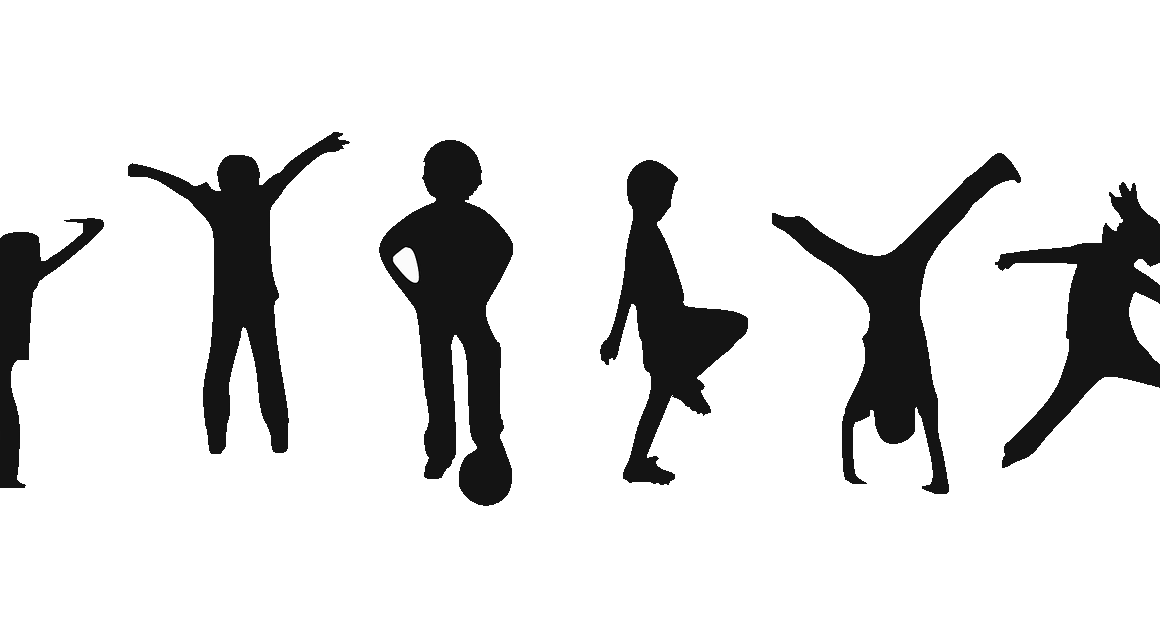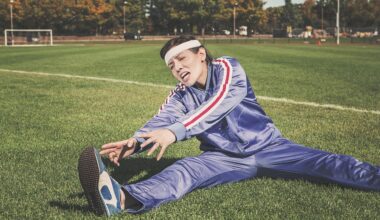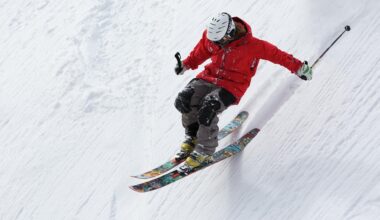Balance and Coordination Exercises for Children with Hyperactivity
Balance and coordination exercises are crucial for children, especially those with hyperactivity. Engaging in such activities helps them develop better motor skills, enhance focus, and improve overall bodily control. These exercises not only facilitate physical growth but also assist in emotional regulation. A structured routine incorporating balance activities, such as walking along a line or hopping on one foot, can be incredibly beneficial. Additionally, team sports might serve as excellent platforms for children to practice balance and coordination. Involving them in these fun and dynamic environments can remarkably stimulate engagement. Regular participation allows for gradual skill improvement, essential for developing confidence. Activities involving balance boards or stability discs can significantly accentuate this experience. It is essential to maintain an encouraging atmosphere which fosters a sense of achievement as they progress. Encouragement may take many forms, including praise and celebrating small milestones. However, care should be taken to match activities to each child’s personal abilities, thus keeping their interest alive without overwhelming them. Developing balance skills through play can effectively channel hyperactive energy into productive outcomes, ultimately aiding their growth and journey toward calming strategies.
Benefits of Balance Training
Balance training offers several benefits that can significantly improve children’s physical abilities. improving stability can decrease the risk of falls and injuries. Children with hyperactivity often lack spatial awareness. Thus, refining balance through systematic training enhances their understanding of body positioning and movement. Activities like tightrope walking using a rope or even hopping on colored mats can immensely aid this development. Additionally, developing these skills can lead to increased self-esteem and spatial awareness in children. Such improvements ensure that they feel more confident when participating in various activities. Moreover, as they notice their progress, it boosts their motivation and willingness to engage further. Increased core strength, which results from balance training, helps in other physical activities as well. Sports and even everyday movements can become easier and less daunting. Also, improved balance can facilitate the performance of complex tasks, ranging from dance to martial arts, as proper body control is necessary. These activities allow children to express their creativity and find joy through movement. Therefore, incorporating balance training into daily routines stands to benefit children’s physical growth immensely while addressing hyperactivity effectively during their developmental years.
Exercises that strengthen the core play a significant role in balancing activities. Engaging in movements like planking and bridge exercises can provide essential support to the spine and enhance stability. Core strength ensures that children can maintain positions without easily losing balance. This foundational strength is crucial for performing various jumping, running, or climbing activities effectively. Children may not realize the underlying support their core provides during dynamic movements. Furthermore, designing fun obstacles courses can introduce balance work seamlessly while keeping children entertained. Integrating games—such as balancing a beanbag on the head while traversing a course—encourages focus and builds balance in a playful setting. These activities can be modified to increase difficulty, adapting to each child’s growth and comfort level. Engaging children in these routines allows for collaborative and friendly competition, as they challenge each other while building camaraderie. Regular participation in these core-strengthening exercises can also reduce impulsivity, helping children learn patience over time. Discovering their strength will cultivate an appreciation for their progress in balance activities. Ultimately, all these factors contribute to a well-rounded approach to managing hyperactivity effectively and enjoyably.
Incorporating Nature into Balance Activities
Embracing nature allows for balance exercises that are both engaging and beneficial. Outdoor settings provide an expansive area for children to explore while honing their coordination skills. Children can walk on natural paths, climb rocks, or balance on logs, which are all exciting ways to foster stability. These activities serve as excellent alternatives to traditional indoor workouts, exposing children to fresh air and sunshine. Nature’s terrain offers various challenges that can adapt to varying skill levels. For instance, balancing on uneven surfaces enhances their adaptability and awareness of their surroundings. Exploring nature also provides sensory stimuli that can soothe hyperactive tendencies while reinforcing focus and attention. Leaves, textures, and sounds all offer unique experiences that internalize their learning. Parents can join these activities, making it a family bonding experience while focusing on health. Fun nature scavenger hunts can incorporate movements that challenge balance as children search for specific items. This engagement encourages learning while having fun, allowing for positive reinforcement. Harmonizing with nature allows children to foster a love for the environment while benefiting their balance skills, ultimately creating adventurous learning moments.
If structured properly, games can effectively develop balance and coordination in children. Incorporating fun and creativity into routines encourages participation, especially for those with hyperactivity. Classic games like “Simon Says” can be adapted to include balance challenges, such as standing on one leg or walking heel to toe. These serve to blend skill development and play simultaneously, which is crucial for hyperactive children. Team-based activities enhance social interaction, important for emotional growth. Children learn to cooperate, focusing their energy while maintaining balance during various games. Relay races focusing on balancing objects, such as a spoon with a ball, push their limits while encouraging collaboration among peers. Additionally, implementing balance board games can visually track advancements, making exercise feel like a play. This data can serve to motivate children as they witness improvements firsthand. Assessing performance through friendly competitions can also drive engagement further. Developing routines that include ample laughter and enjoyment allows children to approach balance exercises positively. Therefore, games effectively act as bridges between mastering balance skills and promoting fun interactions among children while channeling hyperactivity productively through enjoyable activities.
Creating Safe Environments
When conducting balance exercises, ensuring a safe environment is essential, especially for active children who might take risks during activities. Creating designated spaces with soft surfaces can reduce injuries related to falls. Utilizing foam mats or grass in outdoor settings can make a positive difference in safety. Clear boundaries give children an area to explore freely while remaining safe, promoting exploration without the fear of harmful accidents. Setting specific guidelines for practicing balance activities also aids in establishing rules that keep children aware of their surroundings. Introducing safety measures at an early stage encourages them to be mindful and responsible. Additionally, constant supervision ensures proper form during exercises and reinforces the importance of safety. Engagement should also promote cooperation among peers, as they assist each other in maintaining stability. Such collaborative efforts create a supportive atmosphere while allowing children to discover balance together. Incorporating enjoyable feedback mechanisms, such as clapping when someone succeeds, can enhance the overall experience. Creating a channel for positive communication renders an uplifting atmosphere. Thus, safety and encouragement go hand in hand, creating a conducive environment for children to thrive and enhance their balance skills effectively.
Ultimately, balance and coordination exercises provide immense benefits for children with hyperactivity. By engaging them in a variety of activities, you promote growth in physical and emotional domains. Children acquire essential life skills while experiencing fun and creativity during these exercises. Consistently reinforcing the connection with their surroundings fosters not only balance but also resilience, focus, and patience. Introducing elements of play, teamwork, and competition allows for further exploration, keeping children motivated and active. The journey to achieving balance and coordination becomes an experiential learning process, where they almost unknowingly develop awareness and control over their movements. Moreover, the lessons learned extend beyond physical prowess, positively influencing interpersonal skills. Sustained outdoor engagement instills an appreciation for nature while focusing their energetic tendencies toward constructive outcomes. Integrating technology by allowing children to track their progress through apps can also foster motivation. Finally, working alongside educators and physical therapists can yield tailored exercise regimens that suit their unique needs. These experts can provide structured plans which incorporate regular feedback and assessment of progress, ensuring personalized growth and development. All these factors converge toward creating thriving environments where children can learn and mature harmoniously, mastering the artwork of balance and coordination.


